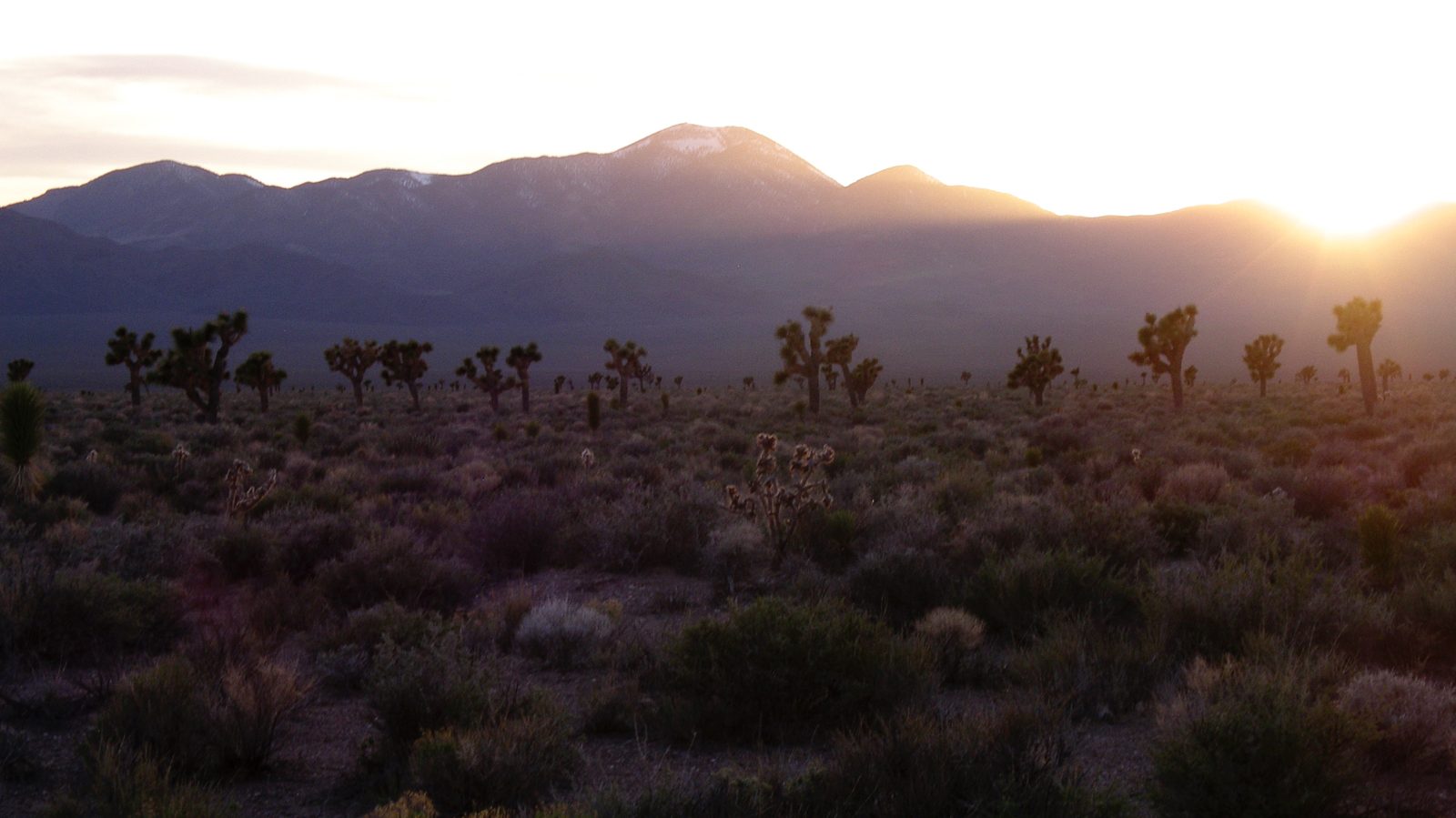“Wait, how many branches was that?” — Community monitoring of Joshua trees launches with leadership training
Earlier this month, community members from across the Mojave Desert came together at the Transitions Habitat Conservancy field station in Puma Canyon in the desert hills above Wrightwood, California, with a deceptively simple mission: to figure out how to count Joshua trees.
The volunteer leaders — from the California Native Plants Society, the Mohave Desert Land Trust, and the Transitions Habitat Conservancy — spent the Veteran’s Day weekend at Puma Canyon to learn a protocol for demographic surveys of Joshua tree populations, guided by Willamette University Associate Professor of Biology Chris Smith and his collaborators on the Joshua Tree Genome Project, US Geological Survey ecologist Todd Esque and CSU Northridge Assistant Professor of Biology Jeremy Yoder.

The JTGP team opened the event with a seminar on the natural history of Joshua tree and the threat it faces from climate change. Joshua trees are already climate change survivors, in a sense — their current distribution in the high desert of the Mojave is a relic of a larger range that, hundreds of thousands of years ago, stretched all the way down to what is now northern Mexico. Since that time the Mojave has grown warmer and drier, shifting from a grassy savannah community to the desert we know today, and Joshua tree populations disappeared from southerly and lowland parts of their range and dispersed into higher elevation, more northerly areas to track suitable climates. The last century has seen much faster warming due to the heat-trapping effects of human-created carbon pollution, which has already warmed parts of the desert as much as a degree Centigrade (about 1.8 degrees Fahrenheit). This rapid change is already reducing the frequency of young trees in many southerly Joshua tree populations, including in Joshua Tree National Park. Without young trees, populations will decline and disappear as the adult trees age and die.

This is where the JTGP and the assembled volunteer leaders come in. To protect Joshua trees for the future, it’s essential to identify populations in which the youngest trees survive to replace their parents, so they can be singled out for conservation. Esque and Smith have run community science workshops in which members of the public spend a day helping to survey Joshua trees in a single place — but one or two of these workshops a year could never cover the ground that’s needed.
The solution the team hit upon was to ask for help from conservation organizations across the Mojave. NGOs like the California Native Plants Society have members across the desert who can help with survey projects; if the JTGP could develop a standardized protocol for surveying Joshua trees, leaders affiliated with these regional conservation groups could take volunteers out to survey trees in their own backyards, and cover much more territory collectively. Smith, Esque, and Yoder pitched this plan to CNPS at the organization’s 2018 annual meeting back in January, and the November leadership training was the ultimate result. The Mojave Desert Land Trust, which works in prioritizing tracts of desert for conservation, and the Transitions Habitat Conservancy, which protects open spaces in the western Mojave, joined in recruiting local volunteer leaders and hosting the event at Puma Canyon.

Volunteer leaders hike out into Puma Canyon to test-drive the survey protocol. (Photo by Jeremy Yoder.) 
Chris Smith explains the survey protocol to volunteer leaders. (Photo by Jeremy Yoder.) 
Volunteer leaders measure a Joshua tree. (Photo by Jeremy Yoder.) 
Hesperoyucca against the sunset in Puma Canyon. (Photo by Jeremy Yoder.)
After filling in the background, the JTGP collaborators led participants out into Puma Canyon to test-drive the survey protocol. This work ran into the second day of the training weekend, and required some careful thought about protocol details. Joshua trees can reproduce clonally by sprouting from underground stems, or rhizomes — how should survey teams differentiate independent trees from clusters of clones? The number of branches bearing green leaves is a good general indicator of a Joshua tree’s age and health — but spotting a just-formed branch takes close inspection.
The weekend concluded with an open meeting to discuss the results of the test-run, and to plan for future work. Participants suggested curriculum design and other resources to better help them prepare their own groups of volunteers when they began surveying. The JTGP team distributed kits of equipment — including extensible measuring rods, tape measures, handheld GPS units, clipboards, and standardized metal tags for marking surveyed trees — and the new collaborators dispersed. Survey work can already begin at selected sites on privately held properties, including some protected by the Transitions Habitat Conservancy, and more will follow as the JTGP finalizes permits for survey work at sites managed by the Bureau of Land Management.
The Joshua Tree Genome Project wishes to thank the Transitions Habitat Conservancy for hosting this leadership training, and our partners with the California Native Plant Society and the Mojave Desert Land Trust for all of their support! If you’re affiliated with CNPS, MDLT, and THC — or another regional conservation organization — and you want to join the effort to survey Joshua trees, sign up here.

You must be logged in to post a comment.